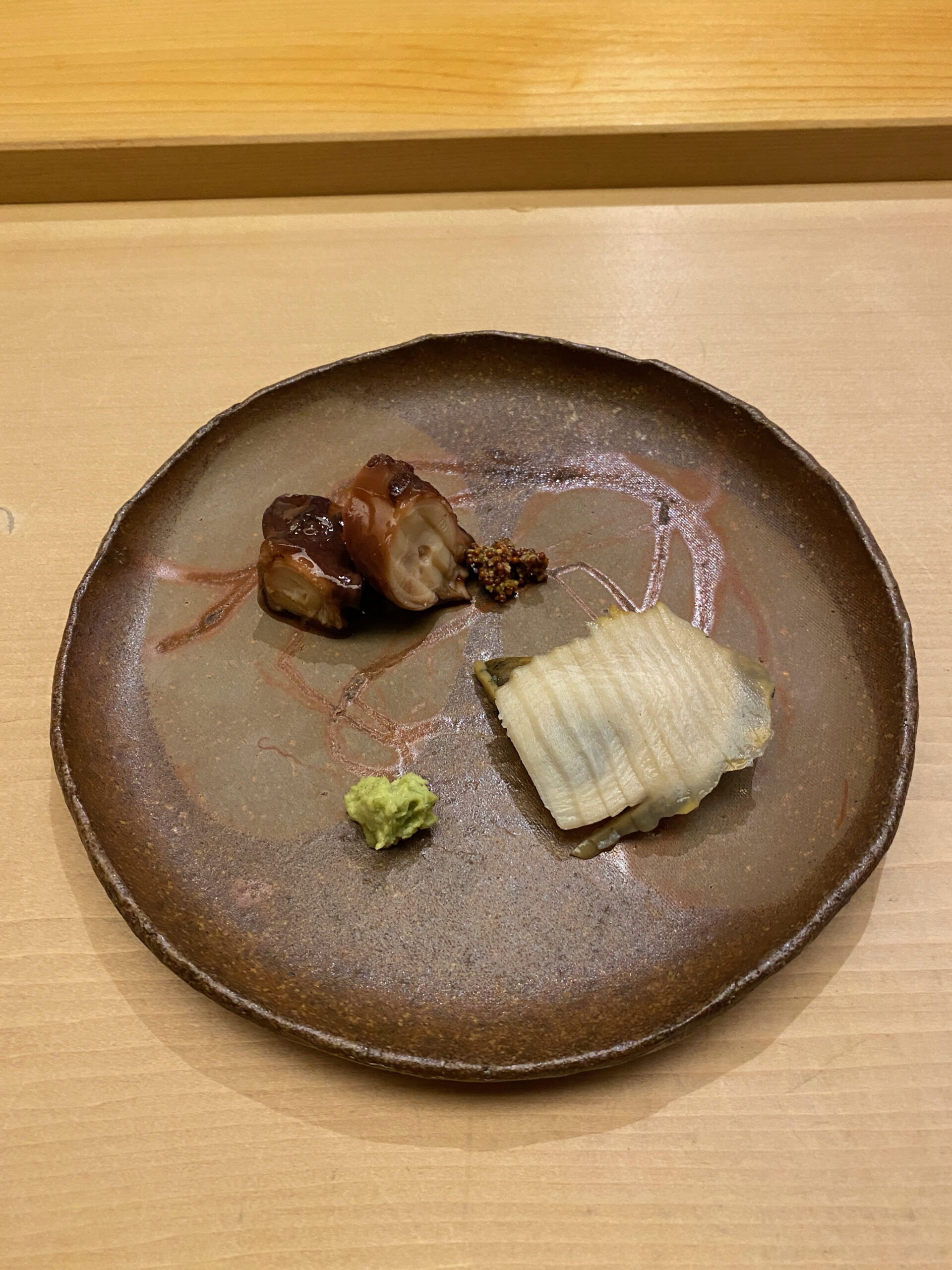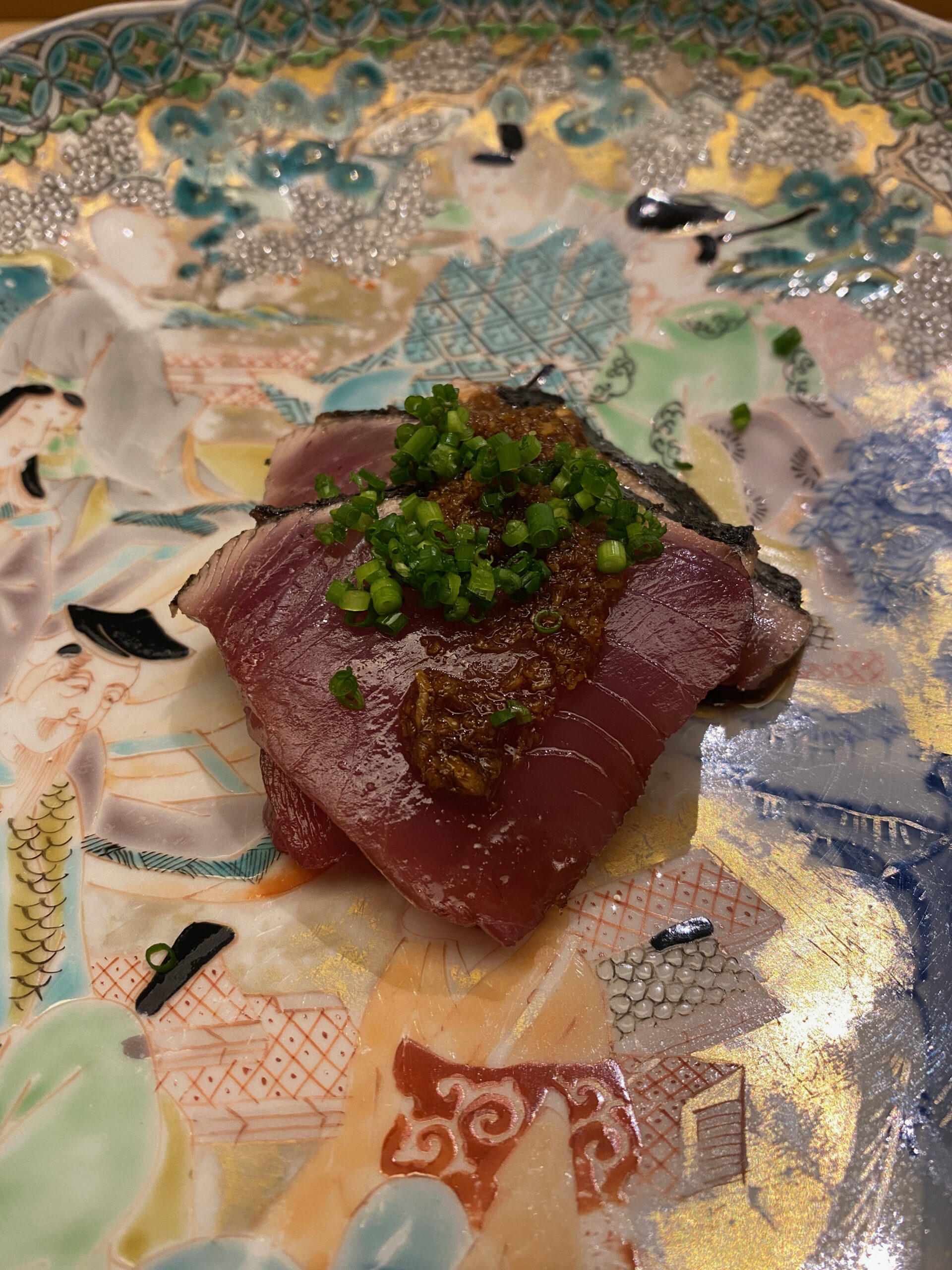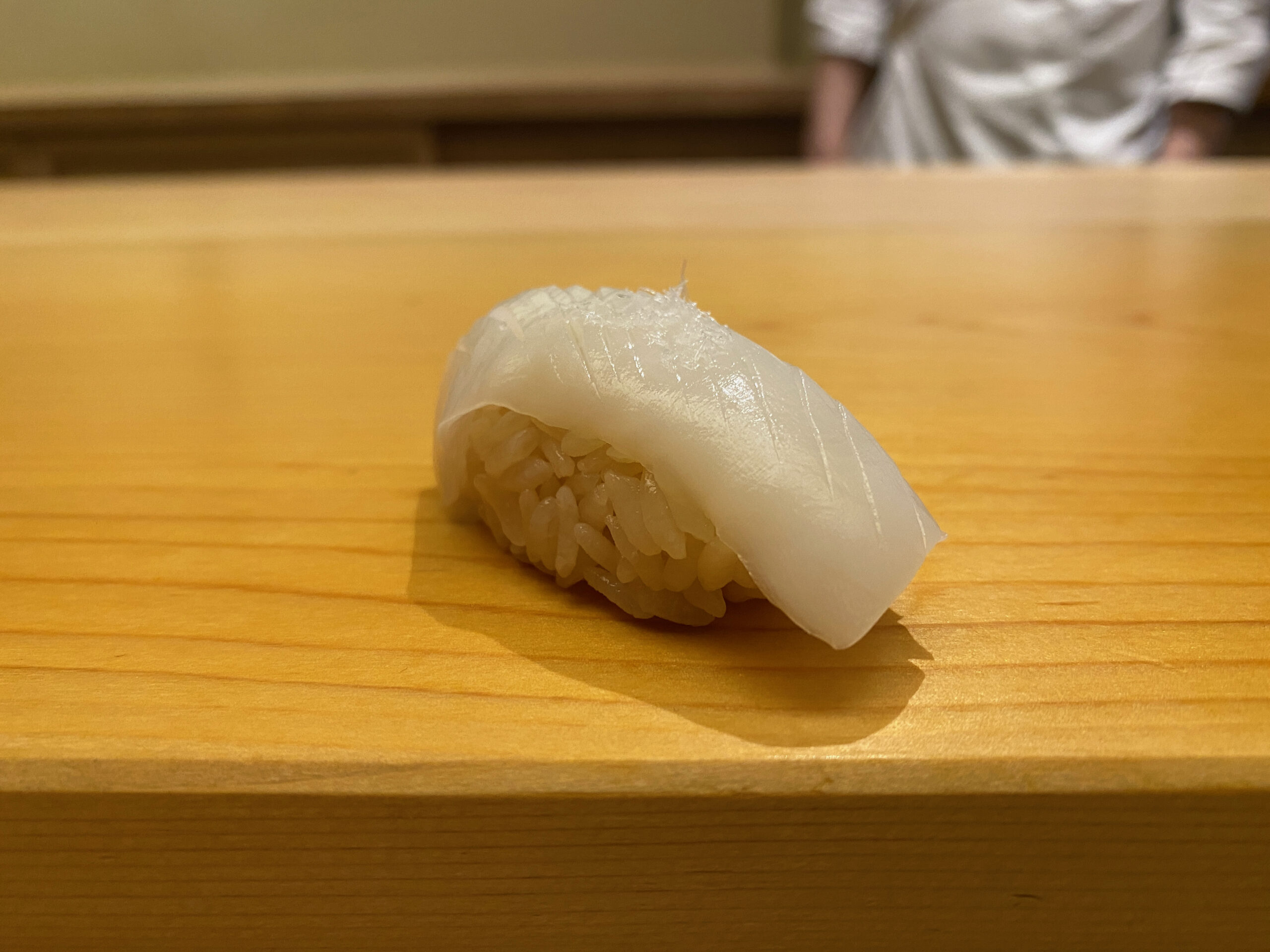New York City Sushi Royalty
There are a few truly upper-echelon sushiya in New York City. Since opening in 2018, Sushi Noz on the Upper East Side has been considered one of those.
It’s not just the cost (Noz is one of the 8 sushiya in New York City over $400).
It’s the care, expertise and quality that Itamae, Nozomu Abe, has brought to a small oasis on a residential street in the Upper East Side.
It’s the feeling. Yes, that sounds like bullshit. Trust me, no one hates that sentence more than me. But you’ll understand when you walk through that beautiful Noren (curtain). It’s a transformative feeling; step in from the United States, emerge in Japan.

Outside Sushi Noz on East 78th St.
Inside, straight ahead is the Ash Room, a small secondary sushi counter. To the left, the Hinoki Counter, the main event, where Abe-san himself presides.
Dining with Noz at Sushi Noz is a big deal in the New York City sushi world. And if you don’t realize that before you book, you will when you do.
They charge an up-front fee.
They send you an email with dining etiquette reminders in advance.
They call to confirm you’re attending.
They literally hang the Michelin stars above the 200-year old Hinoki counter.

Chef Nozomu Abe
They also charge you $400 – and that’s for now. Come May 1st, 2022, that price jumps up to $495, as does the price of the artist formerly known as the Ash Room (previously $295).
The restaurant’s rationale is that equalizing the prices will remove the stigma of “better vs worse” between the two rooms while reflecting the similarity of the ingredients, a key driver of the price.
My view?
Prices are based on a number of factors (duh). Costs of goods sold are one, but so to is market demand. And there’s clearly going to be greater demand for Abe-san than the Itamae in the other room, unless some famous name takes over (I hear Ichimura-san is looking….).
Just looking at the reservations for June, every Abe-san time slot is booked.
Putting on my business hat (my least favourite hat), I give it 6 months before the price of an Omakase with Noz at the Hinoki Counter increases.


“Chef Noz” at work
Back to the Main Event
On the night I visited, the Hinoki Counter served 21 courses: 6 initial courses (otsumami), 10 sushi, a miso soup, tamago and dessert.
Like other sushiya of a similar class, Sushi Noz prepares nearly everything in front of you, including the Otsumami, which are delivered on beautiful ceramic plating.
For example, the artfully presented first course – Murasaki Uni with morsels of Shirako buried underneath – is both a feast for the palette and the eyes.

1: Uni & Shirako

2: Tako & Awabi

The Tako
Awabi with its own liver’s sauce is a true delight
Nothing further, your honour.

The Awabi
Katsuo (Bonito) is a fish with two key seasons: spring, when it leaves to spawn and is lean, and fall, when it returns, plump and full of delicious fat like that kid from Matilda.
The first Katsuo of the season is referred to as Hatsu-Gatsuo, and was served as course 3. The smoky flavour reminded me of version I had the week before at Morihiro in Los Angeles. It didn’t hurt that it was served on a plate literally older than my home country of Canada.

3: Hatsu-Gatsuo

4: Botan Ebi Tempura
I suspect that if Abe-san was asked, he would refer to the Iwashi makizushi below as a signature, though it’s served elsewhere as well.

5: Iwashi

6: Kinki & Mozuku Seaweed
The Sushi
Like the Omakase options at many of New York City’s best sushiya, the non-nigiri small plates – the otsumami – last double the length of the nigiri (~80 to ~40 minutes).
And like Matt Reeves classic The Batman, it’s the middle of this show that truly shines the brightest. Starting with the Sumi-ika (japanese spineless cuttlefish), a popular summer Neta with a season that stretches through spring (as it did for my visit).
Interestingly, the name Sumi-ika literally translates to “ink squid” in english. Yes, it has tons of ink.

7: Sumi-ika

8: Shima Aji

9: Kinmedai
In traditional Edomae-style sushi, Honmaguro is served towards the end of the nigiri procession.
Increasingly though, I’ve seen sushiya take some liberties, as Noz did here with the three Honmaguro nigiri (Akami, Chu-Toro and O-Toro), placing them smack in the middle.
My view is simple; as long as you’re not serving me a scalding hot miso soup in between nigiri to obliterate my taste buds, I have zero issues with any order.
And really, who can complain when the nigiri look as beautiful as they do below.

10: Akami

11: Chu Toro

12: O-Toro (Jabara)

13: Kamasu

14: Ama Ebi

15: Murasaki Uni

Another angle of the Uni

16: Inari
I wanted to strangle this group of four
As the prices of these restaurants rise, naturally some of society’s worst diners are going to find their way into these sushiya.
But even I – the most cynical human on planet earth – was not prepared for the group of four that sat next to me at the counter.
I shit you not, there was an active discussion on the differences between the Iliad and the Odyssey (written by Homer, full marks to me).
One dude asked for sub-appalachain wine (I don’t care if this is a real thing, it still sucks), while the other mused about saline content (????). One was an aspiring author (of course) who bragged about their dad’s money (of course) and then bragged about their dad’s American Express points (didn’t see that one coming).
I strongly believe that a sushi temple should be serene. Feel free to talk, but keep it quiet because it’s a small room where sound travels. More like an airplane, less like a party bus. I’m sure it’s annoying for the Itamae, but they’re usually too polite to say anything.
Thank you for coming to my ted talk.

17: Anago

18: Kinmedai Akedashi

19: Tamago
The dessert was a delicacy
To conclude the 2.5 hour Omakase, Noz presents a Miyazaki Mango like it’s baby Simba in the Circle of Life.
Miyazaki Mangoes come from Miyazaki prefecture on Kyushi island (aka the southern island). They’re renowned for their sweetness (12 on something called the Brix scale) and price – upwards of $200 for a single mango before prices skyrocketed, probably closer to $8,300 or something crazy now.
Staring at one is like looking at a delicious sunshine.




20: Miyazaki Mango
The Verdict
Given the quality of the ingredients, the proficiency of the Itamae, the double-clutch-your-credit-card price and the serene atmosphere, an argument could be made that Sushi Noz currently sits on the Mount Rushmore of the New York City sushi scene.
As I sit here in my kitchen writing this (with a broken air conditioner, no less), reminiscing about my omakase, I’d lean towards agreeing with that position. To me, the best sushi will always navigate the dance between simplicity and complication; for example, nigiri looks alarmingly simple, but it’s a function of centuries of technique, years of practice, months of supply chain and days of aging.
Maybe that’s superlativing food, but then again, this is literally a sushi blog; it’s what we do.
Sushi Noz not just navigates the simplicity dance, it does the lambada all around it; the sushi tastes delicious. It looks delicious. Shit, take another peek at that Ama Ebi in course 14!
As long as you can stomach Trust Fund Tolstay at the other end of the counter, dining with Noz is a meal you won’t forget.
Recommended.



